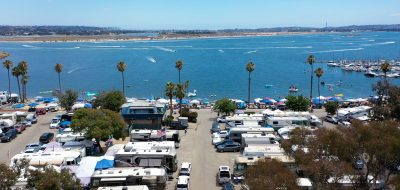Texas is big, beautiful, and diverse. It’s easy to think of Texas as a whole country—800 miles wide and nearly that far from north to south. The state encompasses sunny seacoast to mile-high mountains, dense forests to the cactus-studded desert, and great cities to small villages and towns.
Texas is the only state that was once a sovereign nation, the Republic of Texas. Texas had its own armed forces including a Navy, currency, and representatives to the United States.
Arguably, the state’s most beautiful city, San Antonio has much to offer. Fantastic museums, San Antonio River Walk, La Villita, HemisFair Park, Tower of the Americas, El Mercado, King William Historic District, and, of course, The Alamo are but a few of its highlights. And if you like the Alamo, you’ll love the San Antonio Missions National Historical Park, a string of several 15th- and 16th-century Spanish missions in and around the city.
Without the modern skyline of Houston or Dallas, attractive and festive San Antonio looks nothing like the stereotypical image of Texas, despite being pivotal in the state’s history. Standing at a geographical crossroads, it encases the complex social and ethnic mixes of all Texas. Although the Germans, among others, have made strong cultural contributions, San Antonio’s heritage is Hispanic. Though now the seventh largest city in the U.S., it retains a relaxing feel and is one of my favorite places to spend a few days or a week or more.
Founded in 1691 by Spanish missionaries, San Antonio became a military garrison in 1718 and was settled by the Anglos in the 1720s and 1730s under Austin’s colonization program.
San Antonio is most famous for the legendary Battle of the Alamo in 1836 when General Santa Anna wiped out a band of Texas volunteers seeking independence from Mexico. After the Civil War, it became a hard-drinking, hard-fighting town at the heart of the Texas cattle and oil empires.
Major floods in the 1920s wiped out much of the downtown area, but the WPA (Works Progress Administration) program that revitalized two of the city’s prettiest sites, La Villita and the River Walk, laid the foundations for its future as a major tourist destination.
You could spend weeks in this city and still not experience everything it has to offer. So take your pick, and enjoy!
The Alamo
Is it possible to look at this icon of Texas history too much? I don’t think so. I feel the ghosts of the March 6, 1836, battle every time I enter.
La Villita (Little Village)
This 250-year-old Spanish settlement was reconstructed during the 1930s to preserve the unique buildings. La Villita is now an historic district set up as a living community of working artists, restaurants, specialty shops, and plazas.
Spanish Governor’s Palace
The restored building is the former home of the first governor of the area when Texas was a Spanish colony. Furnished in period pieces, the site is a fascinating glimpse into how the elite lived in that era.
El Mercado (Market Square)
The shops in the largest Mexican market outside Mexico are filled with beautiful terra-cotta pieces, leather goods, embroidered clothing, and much more. Once you’ve exhausted your financial reserve and have more packages than you can carry, enjoy lunch or dinner at either Mi Tierra Cafe or the Pico de Gallo.
Hemisfair Park
In honor of its 250th birthday, San Antonio hosted the 1968 HemisFair. The Tower of the Americas was constructed for this event and continues to tower 750 feet above the city. Operated by the University of Texas, The Institute of Texas Cultures houses fascinating exhibits from each of the cultures that settled Texas. The Instituto de Mexicano, representing the culture of Mexico and the Henry B. Gonzalez Convention Center are also located here.
McNay Art Museum
Formerly the private residence of Marion Koogler McNay, this 1920s mansion on the outskirts of the city has handsome tile floors and a Moorish-style courtyard. Gothic, medieval, late 19th and 20th century American and European paintings, sculpture, graphic arts, rare books, and exhibits are all featured.
King William Historic Area
Named for Kaiser Wilhelm of Prussia, the district is a 25-block area near downtown on the south bank of the San Antonio River. During the late 1800s, the King William District was the most elegant residential area in the city. It was zoned as the state’s first historic district and has once again become a fashionable neighborhood.






